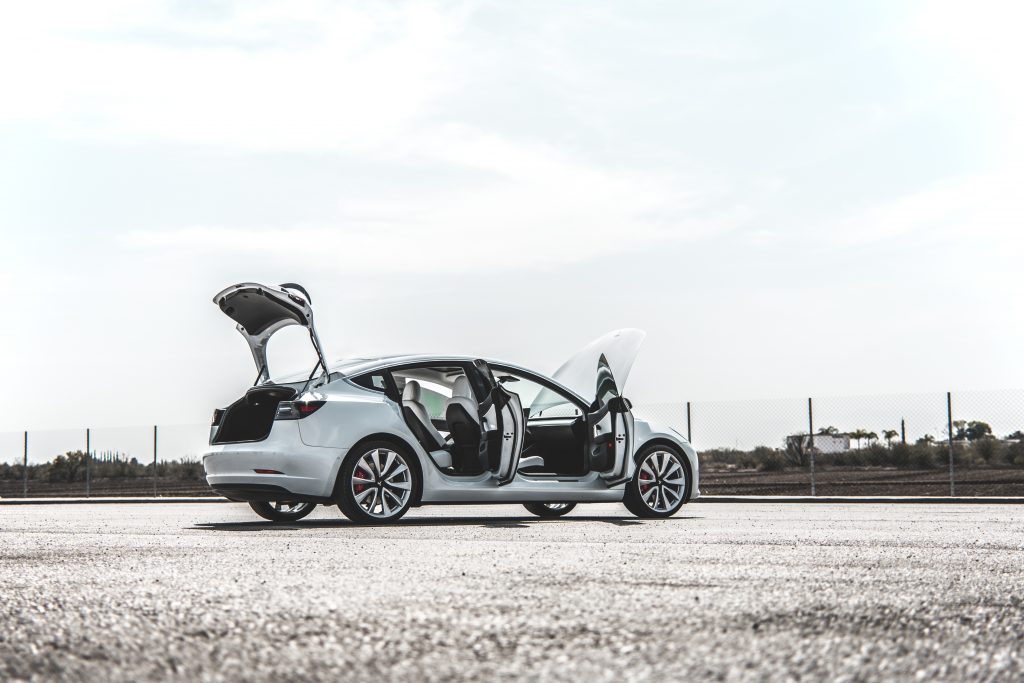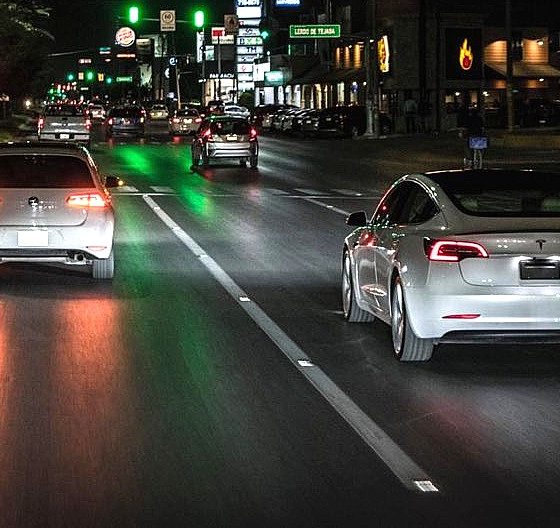In a flash of dramatic irony, Andrew Wheeler, the Administrator of the US Environmental Protection Agency, praised the Trump administration’s Safer Affordable Fuel Efficient (SAFE) Vehicles rule, a rollback of fuel economy standards that would allow automakers to sell more polluting vehicles in the United States.
“Too many reporters fail to mention one very important point: the Obama era CAFÉ standards were not attainable by the auto industry. The truth is, the SAFE rule sets realistic standards, will reduce pollution, and save lives!” Wheeler posted.
Such statements, of course, attracted strong responses. In a call with reporters on Tuesday, California attorney general Xavier Becerra remarked that the EPA Administrator’s Twitter announcement was downright wrong. “(EPA administrator Andrew Wheeler) issued a tweet saying that this new rule would save lives, and reduce pollution, and that it would provide significant benefits to the American economy. In each case, he’s wrong,” Becerra said.
On Tuesday, the National Highway Traffic Safety Administration and the Environmental Protection Agency announced the SAFE standards that will take the place of the Obama-era Corporate Average Fuel Economy (CAFE) rules, which required about 5% annual improvements in fuel efficiency every year from carmakers.
Under the CAFE rules, the EPA noted that automakers would have been required to sell cars and light trucks with an average fuel efficiency of about 54 miles per gallon in 2026 model cars. With the current administration’s SAFE rules, vehicles could simply average about 40 miles per gallon by 2026 to meet the new standards.
In a way, Wheeler’s tweet boiled down to one point. The old CAFE standards were simply unrealistic, and America needs the new SAFE rules to make sure automakers and car buyers win out. Interestingly enough, the EPA official’s post came amidst an ongoing climate crisis and a literal pandemic that involves a virus attacking people’s capability to breathe.
Bad timing and taste aside, the EPA Administrator appears to have conveniently forgotten one particular American carmaker that has had absolutely no problem meeting the “unrealistic” standards of the Obama-era CAFE rules. This carmaker currently stands as the most valuable US-based automaker by market cap, and in recent quarters, it has even turned a profit, highlighting the argument that there is a substantial demand and a solid business model for zero-emissions vehicles.

This carmaker, of course, is Tesla. The company had been producing electric cars since 2008, and it has been mass-producing vehicles since 2012. With the Model 3, Tesla started breaking into the mainstream market, with some car buyers trading in otherwise more affordable vehicles to acquire the electric sedan. A crossover, the Model Y, has begun deliveries ahead of schedule, and if initial impressions from professional reviewers are any indication, there’s a good chance that the all-electric crossover will be a disruptor as well.
With the United States’ SAFE rules, automakers like Ford and GM will likely have less incentive to push electric cars. This may be detrimental to both companies, considering that leaked production plans from both GM and Ford have shown that the veteran automakers are still committed to the internal combustion engine despite their pro-EV rhetoric. This could be a costly move for GM and Ford, since territories outside the United States, such as Europe and China, have committed to electrification.
But amidst all these, there is a silver lining. If veteran automakers like Ford and GM will not step up to the plate and provide good electric cars to meet the demand from buyers, a new breed of EV companies will. Tesla has proven that a well-designed, feature-rich, all-electric car like the Model 3 can dominate their established internal combustion counterparts. There’s a good chance that vehicles like the Cybertruck, or perhaps Rivian’s R1T, could do the same for high-end F-150s and RAM trucks.
In a way, the adjustment of the United States’ emissions standards could prove to be an opportunity for electric car makers. Beyond the United States, after all, authorities are going all-in on electric cars. And for some territories such as Europe and China, there is no more turning back.

Elon Musk
Elon Musk’s X will start using a Tesla-like software update strategy
The initiative seems designed to accelerate updates to the social media platform, while maintaining maximum transparency.

Elon Musk’s social media platform X will adopt a Tesla-esque approach to software updates for its algorithm.
The initiative seems designed to accelerate updates to the social media platform, while maintaining maximum transparency.
X’s updates to its updates
As per Musk in a post on X, the social media company will be making a new algorithm to determine what organic and advertising posts are recommended to users. These updates would then be repeated every four weeks.
“We will make the new 𝕏 algorithm, including all code used to determine what organic and advertising posts are recommended to users, open source in 7 days. This will be repeated every 4 weeks, with comprehensive developer notes, to help you understand what changed,” Musk wrote in his post.
The initiative somewhat mirrors Tesla’s over-the-air update model, where vehicle software is regularly refined and pushed to users with detailed release notes. This should allow users to better understand the details of X’s every update and foster a healthy feedback loop for the social media platform.
xAI and X
X, formerly Twitter, has been acquired by Elon Musk’s artificial intelligence startup, xAI last year. Since then, xAI has seen a rapid rise in valuation. Following the company’s the company’s upsized $20 billion Series E funding round, estimates now suggest that xAI is worth tens about $230 to $235 billion. That’s several times larger than Tesla when Elon Musk received his controversial 2018 CEO Performance Award.
As per xAI, the Series E funding round attracted a diverse group of investors, including Valor Equity Partners, Stepstone Group, Fidelity Management & Research Company, Qatar Investment Authority, MGX, and Baron Capital Group, among others. Strategic partners NVIDIA and Cisco Investments also continued support for building the world’s largest GPU clusters.
News
Tesla FSD Supervised wins MotorTrend’s Best Driver Assistance Award
The decision marks a notable reversal for the publication from prior years, with judges citing major real-world improvements that pushed Tesla’s latest FSD software ahead of every competing ADAS system.

Tesla’s Full Self-Driving (Supervised) system has been named the best driver-assistance technology on the market, earning top honors at the 2026 MotorTrend Best Tech Awards.
The decision marks a notable reversal for the publication from prior years, with judges citing major real-world improvements that pushed Tesla’s latest FSD software ahead of every competing ADAS system. And it wasn’t even close.
MotorTrend reverses course
MotorTrend awarded Tesla FSD (Supervised) its 2026 Best Tech Driver Assistance title after extensive testing of the latest v14 software. The publication acknowledged that it had previously criticized earlier versions of FSD for erratic behavior and near-miss incidents, ultimately favoring rivals such as GM’s Super Cruise in earlier evaluations.
According to MotorTrend, the newest iteration of FSD resolved many of those shortcomings. Testers said v14 showed far smoother behavior in complex urban scenarios, including unprotected left turns, traffic circles, emergency vehicles, and dense city streets. While the system still requires constant driver supervision, judges concluded that no other advanced driver-assistance system currently matches its breadth of capability.
Unlike rival systems that rely on combinations of cameras, radar, lidar, and mapped highways, Tesla’s FSD operates using a camera-only approach and is capable of driving on city streets, rural roads, and freeways. MotorTrend stated that pure utility, the ability to handle nearly all road types, ultimately separated FSD from competitors like Ford BlueCruise, GM Super Cruise, and BMW’s Highway Assistant.
High cost and high capability
MotorTrend also addressed FSD’s pricing, which remains significantly higher than rival systems. Tesla currently charges $8,000 for a one-time purchase or $99 per month for a subscription, compared with far lower upfront and subscription costs from other automakers. The publication noted that the premium is justified given FSD’s unmatched scope and continuous software evolution.
Safety remained a central focus of the evaluation. While testers reported collision-free operation over thousands of miles, they noted ongoing concerns around FSD’s configurable driving modes, including options that allow aggressive driving and speeds beyond posted limits. MotorTrend emphasized that, like all Level 2 systems, FSD still depends on a fully attentive human driver at all times.
Despite those caveats, the publication concluded that Tesla’s rapid software progress fundamentally reshaped the competitive landscape. For drivers seeking the most capable hands-on driver-assistance system available today, MotorTrend concluded Tesla FSD (Supervised) now stands alone at the top.
News
Elon Musk’s Grokipedia surges to 5.6M articles, almost 79% of English Wikipedia
The explosive growth marks a major milestone for the AI-powered online encyclopedia, which was launched by Elon Musk’s xAI just months ago.

Elon Musk’s Grokipedia has grown to an impressive 5,615,201 articles as of today, closing in on 79% of the English Wikipedia’s current total of 7,119,376 articles.
The explosive growth marks a major milestone for the AI-powered online encyclopedia, which was launched by Elon Musk’s xAI just months ago. Needless to say, it would only be a matter of time before Grokipedia exceeds English Wikipedia in sheer volume.
Grokipedia’s rapid growth
xAI’s vision for Grokipedia emphasizes neutrality, while Grok’s reasoning capabilities allow for fast drafting and fact-checking. When Elon Musk announced the initiative in late September 2025, he noted that Grokipedia would be an improvement to Wikipedia because it would be designed to avoid bias.
At the time, Musk noted that Grokipedia “is a necessary step towards the xAI goal of understanding the Universe.”
Grokipedia was launched in late October, and while xAI was careful to list it only as Version 0.1 at the time, the online encyclopedia immediately earned praise. Wikipedia co-founder Larry Sanger highlighted the project’s innovative approach, noting how it leverages AI to fill knowledge gaps and enable rapid updates. Netizens also observed how Grokipedia tends to present articles in a more objective manner compared to Wikipedia, which is edited by humans.
Elon Musk’s ambitious plans
With 5,615,201 total articles, Grokipedia has now grown to almost 79% of English Wikipedia’s article base. This is incredibly quick, though Grokipedia remains text-only for now. xAI, for its part, has now updated the online encyclopedia’s iteration to v0.2.
Elon Musk has shared bold ideas for Grokipedia, including sending a record of the entire knowledge base to space as part of xAI’s mission to preserve and expand human understanding. At some point, Musk stated that Grokipedia will be renamed to Encyclopedia Galactica, and it will be sent to the cosmos.
“When Grokipedia is good enough (long way to go), we will change the name to Encyclopedia Galactica. It will be an open source distillation of all knowledge, including audio, images and video. Join xAI to help build the sci-fi version of the Library of Alexandria!” Musk wrote, adding in a later post that “Copies will be etched in stone and sent to the Moon, Mars and beyond. This time, it will not be lost.”










